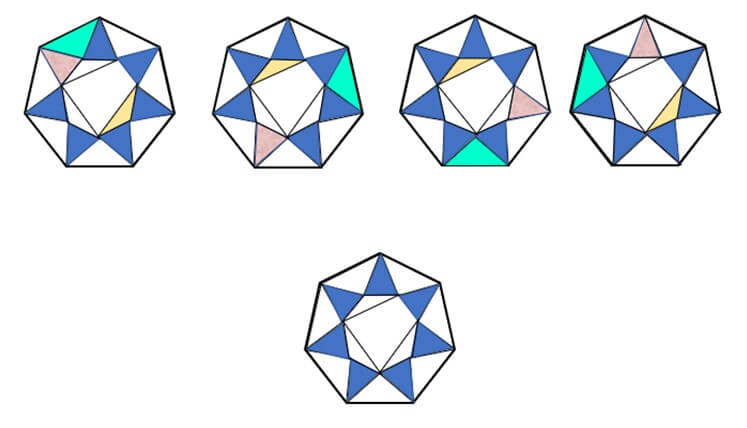Are you dreaming of a career as a pilot? Before you can start flying high in the skies, you'll need to pass a rigorous pilot aptitude test. This exam assesses your cognitive abilities, personality traits, and technical skills to determine if you have what it takes to be a successful pilot.
We understand the challenges of preparing for the pilot aptitude test. That's why we've developed a comprehensive PrepPack that covers everything you need to know to ace the exam.
Numerical Practice Tests:
- 12 number series tests
- 12 numerical word problems
- 9 numeracy skill tests
- 7 numerical drills
Logical Reasoning Practice Tests:
- 22 inductive reasoning tests
- 9 abstract reasoning tests
- 9 figural matrices tests
- 2 spatial reasoning exercises
Verbal Reasoning Practice Tests:
- 8 verbal reasoning tests – true/false/cannot say
- 5 verbal comprehension tests
Behavioral & Personality Tests:
- 2 group exercises
- 1 role-play exercise
- 1 personality test
Study Guides:
- 12 study guides & 8 video tutorials
This PrepPack includes:
✈ Practice Tests and Questions that will give you all the practice you need to answer the various questions accurately and quickly, sharpen your skills, and gain confidence in areas you feel need extra work. Including Numerical, Verbal, Abstract, Inductive, Deductive, Mechanical and Logical Reasoning Practices; Reading Comprehension; Situational Judgement; Personality Tests; and much more!
✈ Video Tutorials & Study Guides: full of in-depth practical explanations and tips that will give you a broader understanding of the test and how to master it - giving you the edge over the competition.
The Pilot Aptitude Test
The pilot aptitude test is a comprehensive assessment used by airlines and aviation organisations to evaluate the suitability of candidates for pilot training programs. The test is designed to measure a range of cognitive abilities, personality traits, and technical skills essential for a successful career as a pilot. The most common test providers are SHL and cut-e.
The pilot aptitude test typically consists of multiple-choice questions and is administered in a timed, standardised format. The exam is divided into several sections, each assessing a different competency area. These sections may include:
- Numerical Reasoning: assessing your ability to perform mathematical calculations and analyse data
- Verbal Reasoning: evaluating your comprehension of written passages and your ability to draw logical conclusions
- Abstract Reasoning: evaluates your ability to think logically and solve complex problems by identifying patterns and relationships between abstract shapes and designs.
- Spatial Awareness: testing your capacity to understand and manipulate visual information in three dimensions
- Technical Comprehension: assessing your knowledge of aviation terminology, principles, and procedures
- Personality Assessment: evaluating your personal characteristics, such as your communication skills, leadership potential, and adaptability to stress
Pilot Aptitude Practice Test
The sample questions below don't include all the different types you may face in the test, but most of them. If you want to practice more types of questions, you can check out our Pilot Aptitude Test PrepPack.
Airline Pilot Tests PrepPack
Our prep pack includes dozens of practice tests covering all the different types of questions in the test. With our practice, you can master the skills and knowledge needed to succeed in your assessment, reduce stress on test day, and increase your chances of success.
How to Pass the Pilot Aptitude Test: 7 Tips to Help You Prepare
- Prepare early: Start preparing for the test as early as possible to give yourself enough time to practice and improve your skills. Our PrepPack includes practice tests and study guides to help you get started.
- Familiarize yourself with the test format: Take the time to understand the format of the test and the types of questions you can expect. This will help you feel more confident on test day and better equipped to answer the questions correctly.
- Practice time management: The pilot aptitude test is timed, so it's important to practice time management during your preparation. Use a timer to simulate the actual test conditions and aim to complete each section within the allotted time.
- Focus on your weaknesses: Identify your weak areas and focus on improving them through targeted practice and study. Our PrepPack includes personalized feedback and expert guidance to help you target your areas of weakness.
- Stay calm and focused: Test anxiety can be a major obstacle to success on the pilot aptitude test. Practice relaxation techniques like deep breathing or visualization to help you stay calm and focused during the exam.
- Be familiar with aviation terminology and concepts: The technical comprehension section of the pilot aptitude test may include questions that test your understanding of aviation concepts and terminology. Make sure you're familiar with these terms and concepts to give yourself the best chance of success.
- Follow instructions carefully: Read and follow the instructions for each section of the test carefully to ensure that you don't miss any important details or make any careless mistakes. Double-check your answers before submitting them to avoid any errors.
FAQ
The pilot aptitude test can vary in length, depending on the specific organization administering the exam. Typically, the test can take anywhere from 2 to 6 hours to complete.
The pilot aptitude test typically consists of multiple-choice questions and is divided into several sections, each of which assesses a different area of competency. These sections may include numerical reasoning, verbal reasoning, spatial awareness, technical comprehension, and personality assessment.
The policies regarding retaking the pilot aptitude test vary among different organizations. Some may allow candidates to retake the exam after a certain period of time, while others may have stricter rules regarding retakes. It's best to check with the specific organization you're applying to for their retake policy.
The pilot aptitude test is a critical step in the pilot training process, and success on the exam is essential for aspiring pilots who want to pursue a career in aviation. The test results are often used as a key factor in evaluating candidates for pilot training programs, so it's important to prepare thoroughly and aim for a high score.
- Qantas Pilot Assessment
- Cut-E Pilots Test
- SHL Assessments and SHL Free Practice Test
- Air Traffic Controller Tests
- Cabin Crew Assessment
- British Airways Assessment
- Aer Lingus Assessment
- Cathay Pacific Assessment
- EasyJet Assessment
- Fly Emirates Assessment
- Fly Dubai Assessment
- Lufthansa Assessment
- Qatar Airways Assessment
- Ryanair Assessment
- Leading Edge
- NATS







